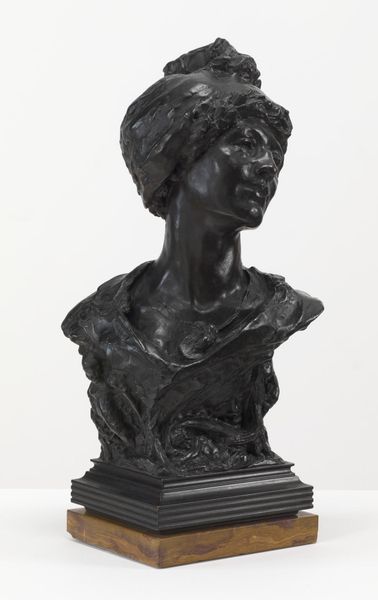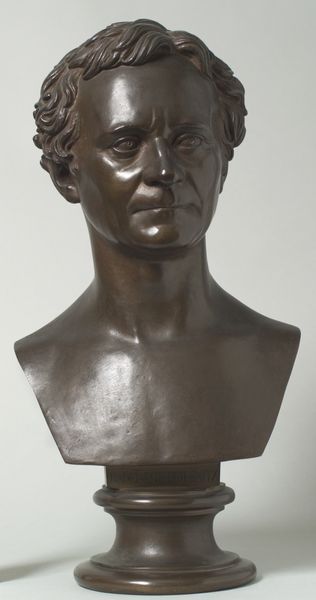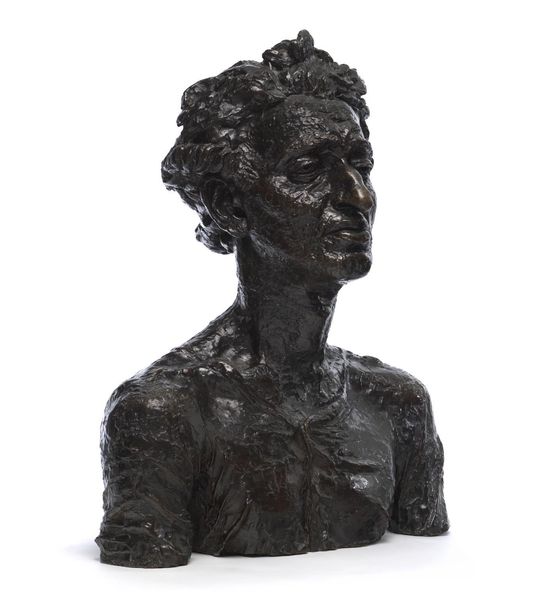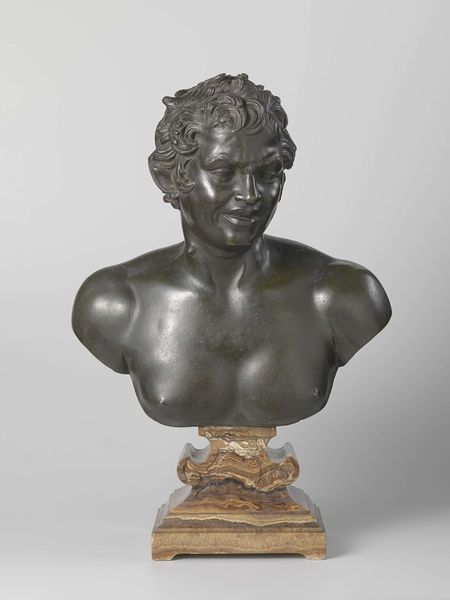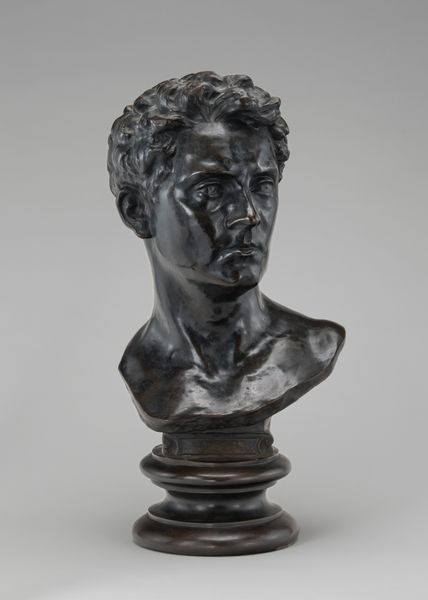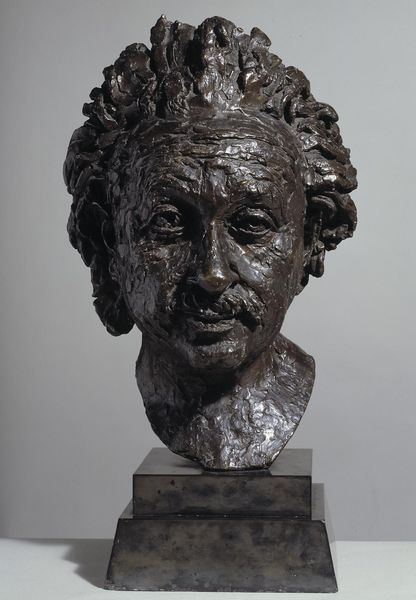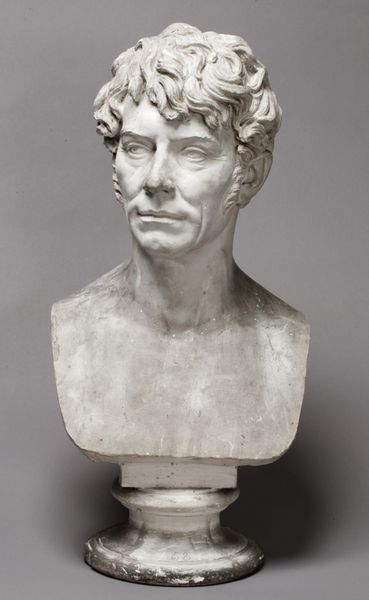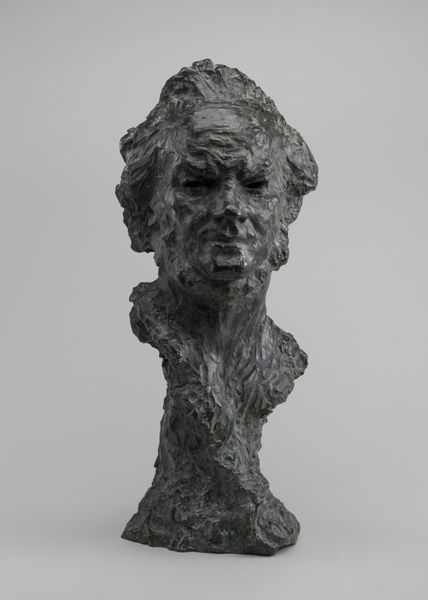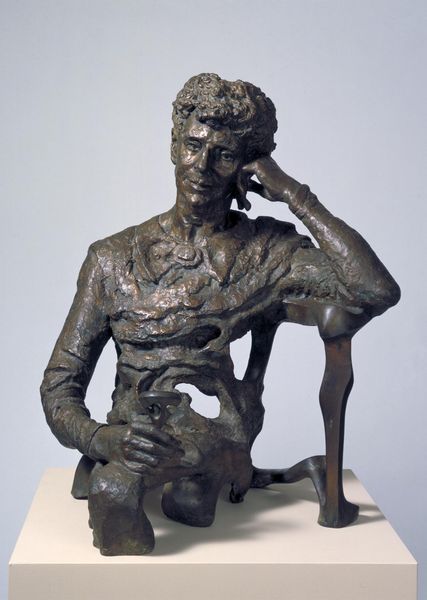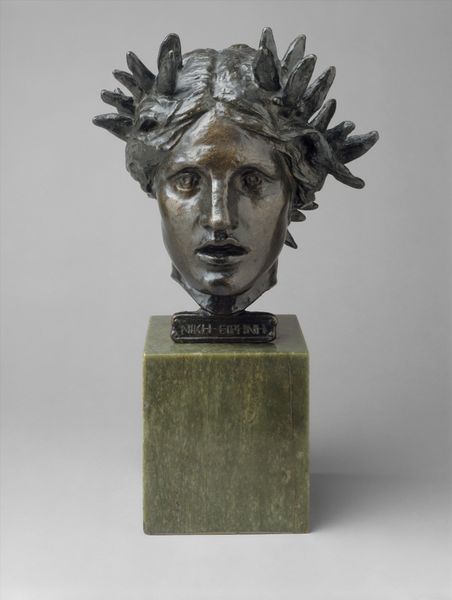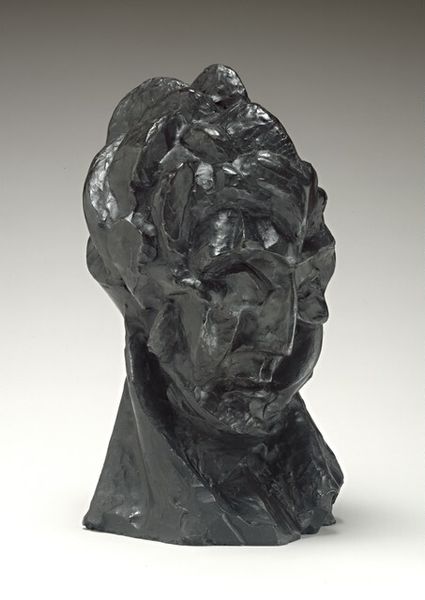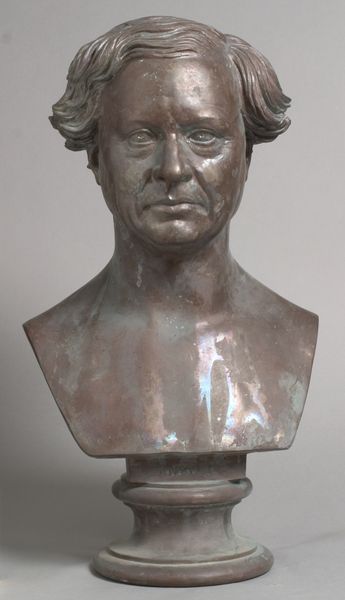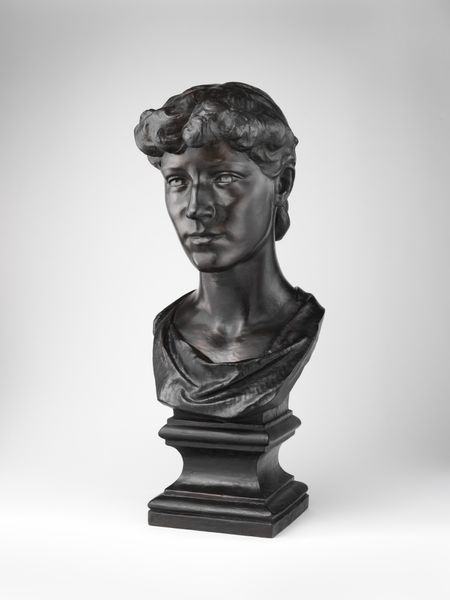
Dimensions: object: 600 x 319 x 193 mm, 30.8 kg
Copyright: CC-BY-NC-ND 4.0 DEED, Photo: Tate
Editor: So, this bronze bust portrays Ignacy Jan Paderewski. It's by Sir Alfred Gilbert, and it's currently held in the Tate Collections. The texture of the hair and the solemn expression give it such a romantic feel. What do you see in this piece? Curator: Gilbert's choice to depict Paderewski, a Polish pianist and composer who later became Prime Minister of Poland, isn't merely about artistic representation. It's a deliberate act of immortalizing a figure who embodies cultural and political resistance. Consider the late 19th century rise of nationalism and the fight for Polish independence; how does this sculpture speak to that struggle? Editor: It really highlights the power of art as a symbol of identity and resistance. I hadn't thought about it that way. Curator: Exactly! It prompts us to consider how representation intersects with power, memory, and the ongoing struggle for self-determination.
Comments
tate 6 months ago
⋮
http://www.tate.org.uk/art/artworks/gilbert-ignacy-jan-paderewski-n04755
Join the conversation
Join millions of artists and users on Artera today and experience the ultimate creative platform.
tate 6 months ago
⋮
This work depicts Ignacy Jan Paderewski (1860-1941), a Polish pianist who was renowned for his dazzling technique and luxuriant head of hair. In 1918 he became Prime Minister of Poland. The bust was completed in two hours while Paderewski played the piano in Gilbert’s studio. The plaster was not cast into bronze until 1934, suggesting that Gilbert considered it unfinished. However, it has a sense of freedom not found in other contemporary portraits by Gilbert. Gallery label, February 2010
